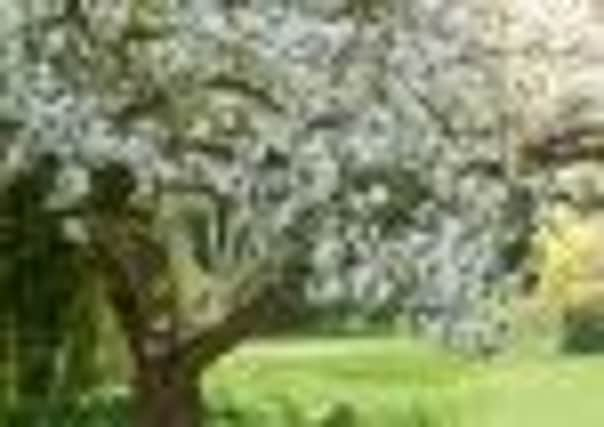Gardening: It may have taken a year to chronicle in pictures, but Beth Chatto’s beautiful garden took a lifetime to grow


“Right plant, right place” has become a familiar phrase, but it was Chatto’s groundbreaking work that really made people embrace this notion that plants look and perform better in the conditions they’re naturally adapted to. Over the last 50 years Chatto has produced inspiring books such as The Gravel Garden and The Woodland Garden; she has won ten gold medals at RHS Chelsea Flower Show and she manages a nursery where people can buy rare and unusual plants. At the heart of all this is the garden in Essex that shows off the wisdom of her horticultural thinking.
It is this garden that is the subject of a new book, A Year in the Life of Beth Chatto’s Garden (£16.99, Frances Lincoln), by award-winning photographer Rachel Warne. Warne says she was more than a little daunted about meeting Chatto for the first time, particularly as she’s not a gardener herself: “I did admit to her that I don’t know many plant names and she put her hand on my arm and said ‘don’t worry dear, I’m still learning’.”
Advertisement
Hide AdAdvertisement
Hide AdThe book features an introduction by gardener Fergus Garrett, a close friend and former student of Chatto’s who provides an overview of her horticultural career. He explains that it was in the early 1960s that Chatto and her husband Andrew built a house on wasteland at the far end of a fruit farm he owned. First there was a major clear-up operation to get rid of the brambles, blackthorn and willows, then there was the challenge of the blustery winds, low rainfall and variable soils. Chatto set about the task in hand with gusto, first transforming a sun-baked area by the house into a Mediterranean garden filled with cistuses, santolinas, hebes, yuccas, junipers and grasses. The backdrop was brought to life with colourful poppies, gladioli, alliums and irises. She was at the start of a horticultural path that would eventually lead to the creation of her acclaimed woodland, damp and gravel gardens; each an inspiration to gardeners who’d previously considered these conditions a hindrance rather than an opportunity.
Rachel Warne says that Chatto’s passion for the garden was evident, but that didn’t always make things go smoothly when it came to choosing what to photograph. “There were times when there was a conflict of interest and she might say ‘I love blue skies’ and I would say ‘I don’t like blue skies’ because that’s too picture-postcard for me,” she says. “So there were compromises but I realised that the garden is her life’s work and I really had to take that into consideration and be sympathetic towards it.” In the end there was only a tiny percentage of pictures that caused such debate – on occasions when Chatto was keen that things look their best and Warne was looking at the garden from a photographer’s point of view, with an interest in decay and plants breaking down.
“People might assume it’s just a pretty picture book, but Beth wrote the captions and they are really informative,” says Warne. Certainly as you follow the book through the seasons, all of the details you need are there to help you try and recreate the look at home. In spring there are carpets of blue and white wood anemones and pink and plum-coloured Lenten roses while the orange bells of crown imperial fritillaries make a bold statement. In the summer the flowering plants come into their own with pink phloxes, yellow anthemis and red heleniums catching the eye. You’ll find yourself jotting down the names of star plants, including the stag’s horn sumach, Rhus typhina, a boldly silhouetted tree with year-round interest.
Warne admits that the weather can be the bane of her life in terms of getting the photos she wants, and last-minute cancellations are common when poor weather just wouldn’t do the garden justice. She explains that one of the issues she came up against concerned the light and the fact that the garden is sunken. “In winter it takes the light a while to get in and you never really get sunrises or sunsets in Beth’s garden,” she says. “The sun goes behind the big eucalyptus and down the hill or it comes up at the bottom where the woodland is. So that was quite challenging for me.”
There might not be sunsets but the photographs of autumn have plenty of atmosphere, showing the changing foliage, while the winter images are perhaps the most striking, with flaming red dogwoods standing out against a snowy backdrop and statuesque mature trees providing structure. If ever you needed proof that a garden can have year-round interest, this book provides it. “Beth is very visual and that’s great because it makes my work easier,” says Warne. “You still have to have the right light and all the other elements must come together to be able to compose the picture, but to be honest it’s hard to take a bad picture of Beth’s garden.”
Warne says she’s hopes that her book will be a treat for gardeners – something that they can sit down with, relax and enjoy. “It’s also a homage to all the hard work that goes into Beth’s garden,” she says. “It’s a celebration.” In her foreword to the book, Chatto says she is deeply grateful to Warne for capturing the many moods and atmospheres during the year, “which never will be seen exactly the same again”. Thanks to the two women’s efforts, we’re given the chance to take a walk through a one-off garden, guaranteed to fill us with admiration for Chatto’s achievements and renewed enthusiasm for our own plots.